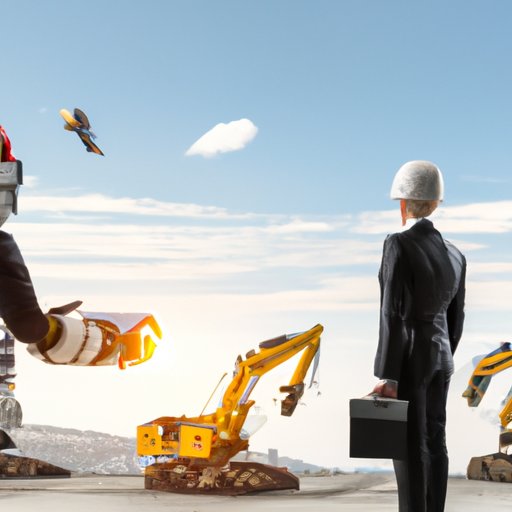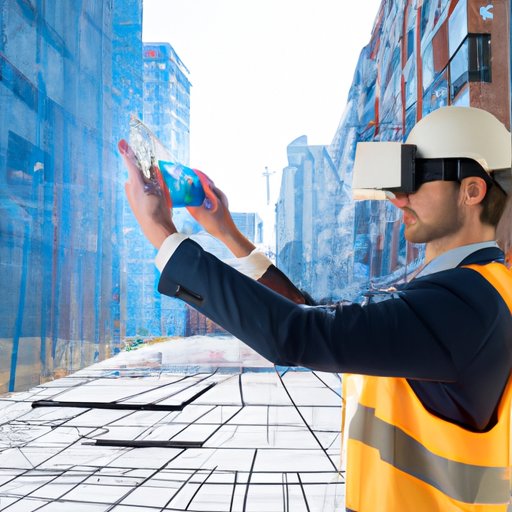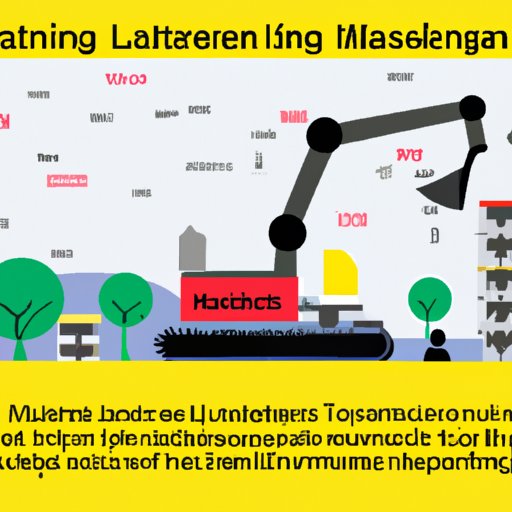Introduction
The construction industry has long been one of the most traditional sectors in the world. But with the advent of new technologies, the industry is undergoing a major transformation. Technology is not only changing the way construction projects are managed and completed, but it is also helping to reduce costs and improve safety on sites.

Exploring the Benefits of Automation and Robotics in Construction
Automation and robotics have become increasingly common in the construction industry. Automation can help reduce labor costs and increase safety on construction sites. For example, robotic excavators can be used to dig trenches and other foundations without the need for human operators. This reduces the risk of injury or death due to dangerous working conditions. Additionally, automated systems can help streamline processes such as material handling, which can lead to increased efficiency and productivity.
Robotics can also be used to construct buildings quickly and accurately. For instance, robots can be used to lay bricks, install drywall and paint surfaces. This helps to reduce the amount of time and money spent on a project, as well as improving the accuracy of the finished product.

Examining the Impact of Augmented Reality on the Construction Industry
Augmented reality (AR) is becoming an increasingly important tool in the construction industry. AR technology allows users to view and manipulate virtual models of buildings in real-time. This can be used to help visualize projects before they begin and spot potential problems during construction. It can also be used to enhance project management by providing real-time updates on progress and identifying areas that need improvement.
AR can also be used to improve accuracy and quality control on construction sites. By overlaying virtual models with the physical environment, users can ensure that components are installed correctly and that the finished product meets expectations. Finally, AR can be used to improve communication between stakeholders, allowing them to collaborate more effectively on projects.
Analyzing the Role of Big Data in Streamlining Construction Processes
Big data analytics is playing an increasingly important role in the construction industry. By analyzing large amounts of data, companies can identify patterns and trends that can be used to optimize workflows and streamline processes. For example, big data can be used to predict demand for materials, forecast labor shortages and optimize supply chain management.
Big data can also be used to identify areas of waste and inefficiency. Companies can use data to analyze the performance of their teams, equipment and processes and make changes accordingly. This helps to ensure that projects are completed on time and within budget.
Investigating the Use of 3D Printing for Building Materials
3D printing is becoming increasingly popular in the construction industry. The technology can be used to create building components such as walls, doors and windows quickly and cheaply. By using 3D printing, companies can save money on materials and reduce waste. Additionally, 3D printing can be used to produce complex shapes and structures which would otherwise be difficult to manufacture.
3D printing can also be used to produce customized components for specific projects. This helps to reduce turnaround times, as components can be printed on-site in a matter of hours rather than days.

Evaluating the Effectiveness of Machine Learning in Construction
Machine learning is also being used to automate processes in the construction industry. Machine learning algorithms can be used to automate inspections, scheduling and forecasting. This helps to reduce the amount of time and money spent on manual processes and ensures that projects are completed on time and within budget.
Machine learning can also be used to detect anomalies in data. This helps to identify potential problems before they become serious and can help to improve safety on construction sites. Additionally, machine learning can be used to optimize workflows and streamline operations.
Assessing the Potential of AI-Powered Design Tools in the Construction Industry
AI-powered design tools are also being used to improve the design process in the construction industry. These tools can be used to generate designs based on user preferences and project requirements. This helps to reduce the amount of time and effort spent on designing projects, as well as ensuring that projects meet customer expectations.
AI-powered design tools can also be used to improve collaboration between stakeholders. By using these tools, teams can quickly share ideas and make decisions faster. This helps to reduce the amount of time and money spent on projects and improves the overall quality of the finished product.
Conclusion
Technology is transforming the construction industry in many ways. From automation and robotics to augmented reality and 3D printing, the sector has seen a tremendous transformation in recent years. Technologies such as machine learning and AI-powered design tools are also beginning to play an important role in the industry. As more companies embrace these technologies, the construction industry is sure to see further improvements in safety, efficiency and productivity.
In conclusion, technology is revolutionizing the construction industry. With the right tools and strategies in place, construction companies can reduce costs and improve safety on sites. Furthermore, new technologies can help streamline processes and enable teams to collaborate more effectively on projects. As the industry continues to evolve, these technologies will play an even bigger role in the future.
(Note: Is this article not meeting your expectations? Do you have knowledge or insights to share? Unlock new opportunities and expand your reach by joining our authors team. Click Registration to join us and share your expertise with our readers.)
